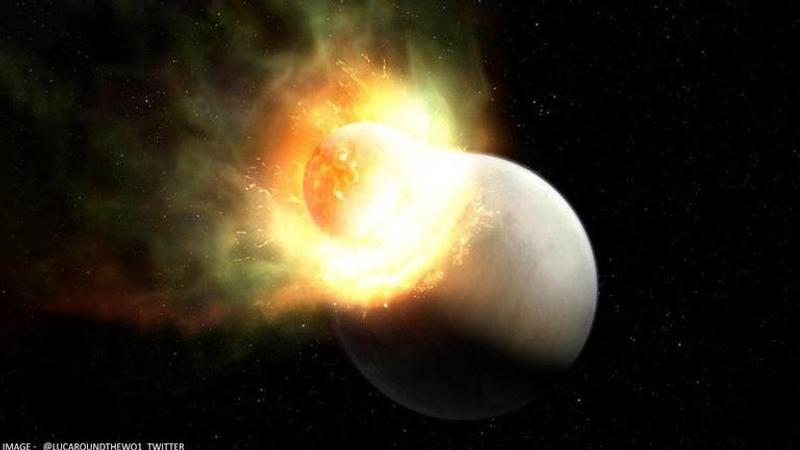Published 17:19 IST, October 21st 2021
Earth-like planet lost its atmosphere after massive collision 2,00,000 yrs ago: Study
The planet endured the impact at more than 22,000 miles per hour which might have been the reason for the stripping off of its atmosphere.

Doubling down on the research over a collision between space entities, a new team of astronomers has discovered an Earth-like planet that got its atmosphere wiped away due to a massive collision. Astronomers from the Massachusetts Institute of Technology (MIT) have found the first evidence of a 'giant impact' that occurred in a planetary system dubbed HD 172555, suggested a report by Daily Mail.
Collision 95 light-years away
The massive collision, which wiped part of the planet's atmosphere, occurred roughly 2,00,000 years ago in a planetary system that is located 95 light-years away from the Earth. Published in the journal Nature, the findings of the study further revealed that the planet endured the impact at more than 22,000 miles per hour which might have been the reason for the stripping off of its atmosphere.
The study suggests that astronomers obtained the evidence of the incident by monitoring the carbon monoxide and dust that surrounded the HD 172555 star. Their observations hinted towards a possible collision as the carbon monoxide was found circling close to HD 172555, which the experts suspected could have only resulted after a collision between two protoplanets similar to the size of the Earth. The team acquired the data using the Atacama Large Millimeter Array in Chile, reported Daily Mail.
Talking about their discovery, the study's lead author, Tajana Schneiderman said that the scientists have gathered such evidence for the first time which has given them additional insight into protoplanetary collisions, something which we don't have much evidence of. Moreover, Schneiderman also called the star system 'weird' as the HD 172555 possesses dust that contains minerals not found in a star along with carbon monoxide gas that pints towards a collision.
Further weighing in on the evidence, Schneiderman said his team analysed the carbon monoxide system because this particular star system was pretty interesting and also because the carbon monoxide is easiest to find while studying gases in debris disks. He reiterated that the heavy presence of gas so close to the star definitely should have resulted from an impact that occurred so long ago. It is the only scenario which the experts believe the most and have ruled out all other possibilities.
Image: Twitter/@lucaroundthewo1
Updated 17:19 IST, October 21st 2021



